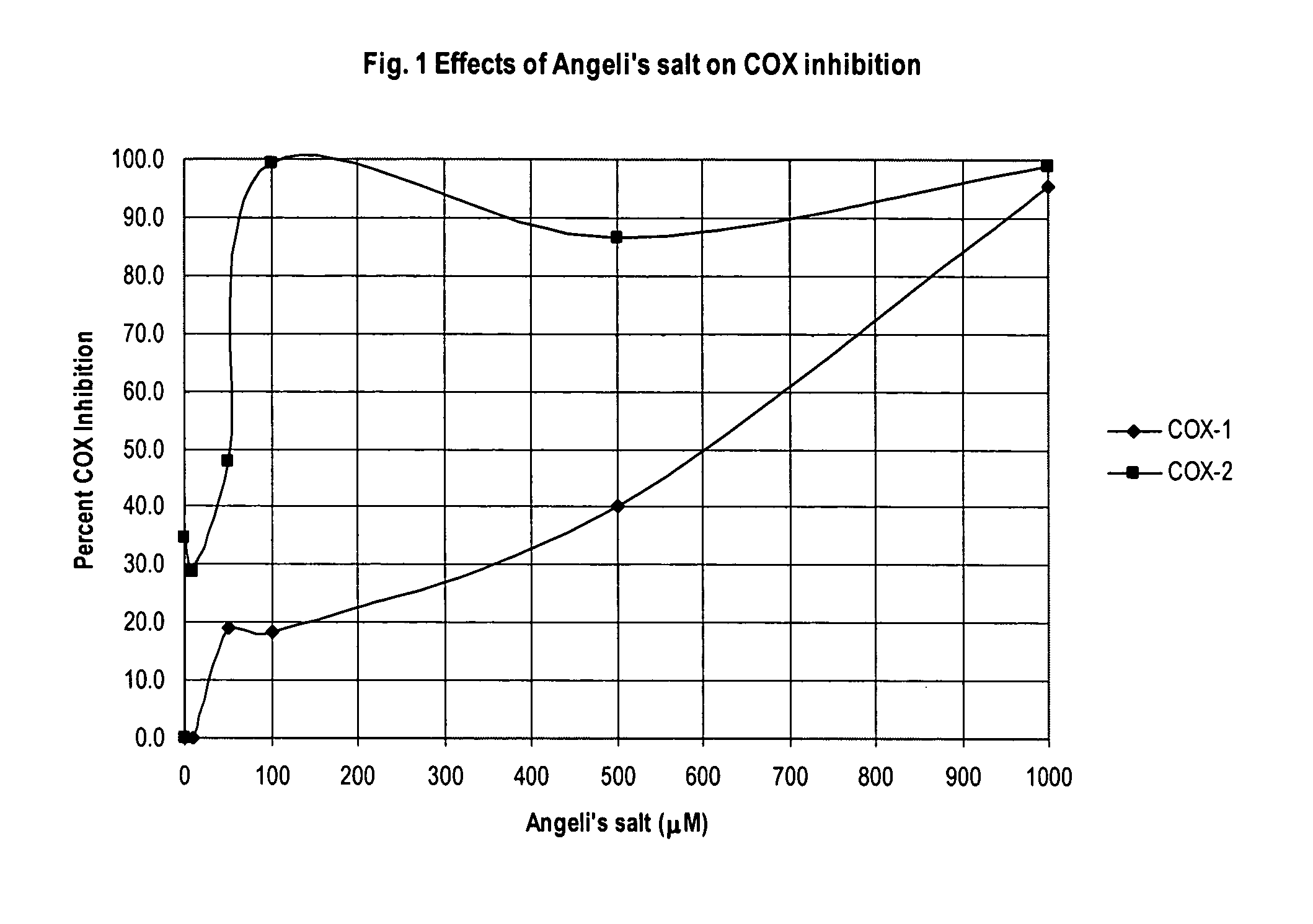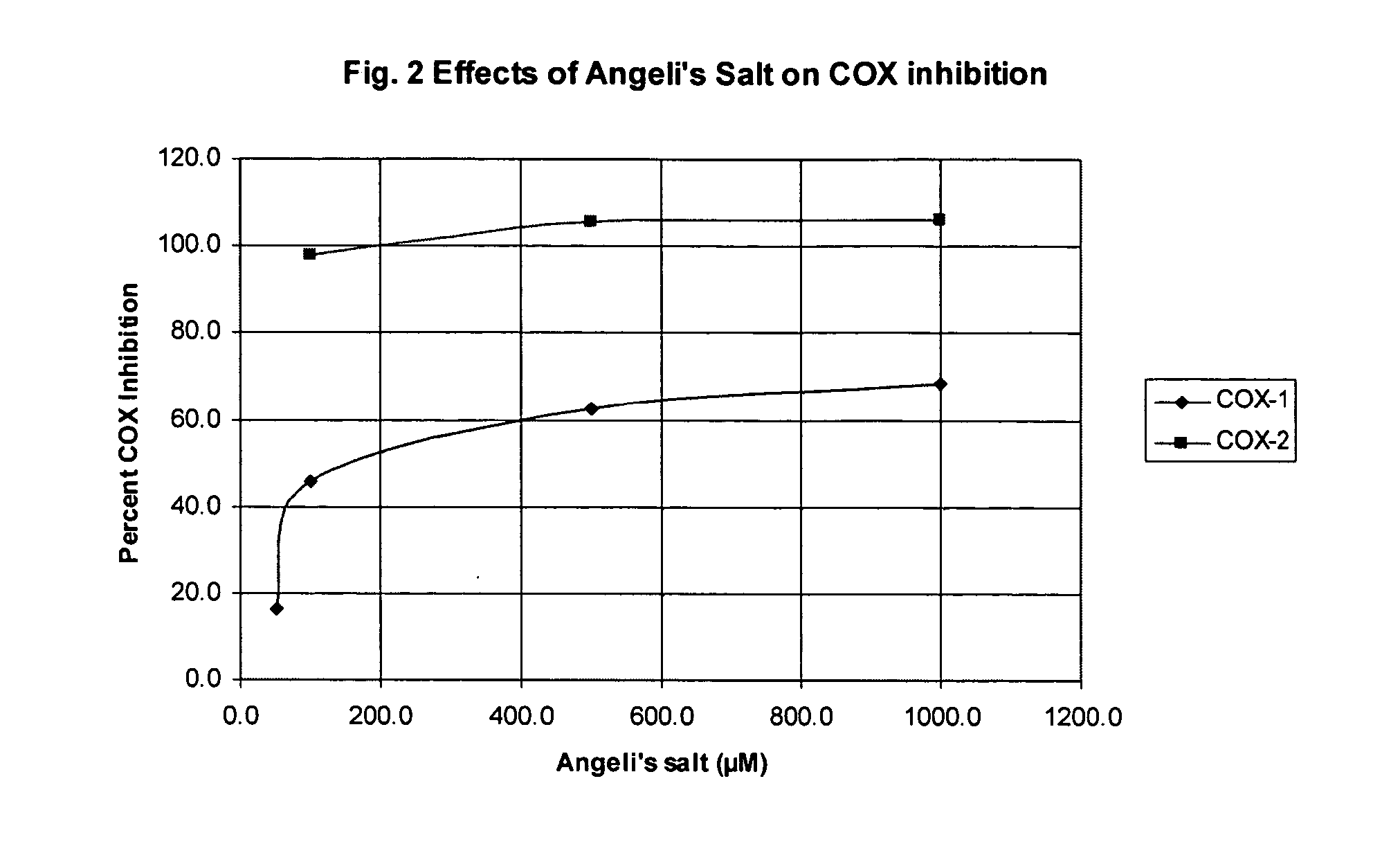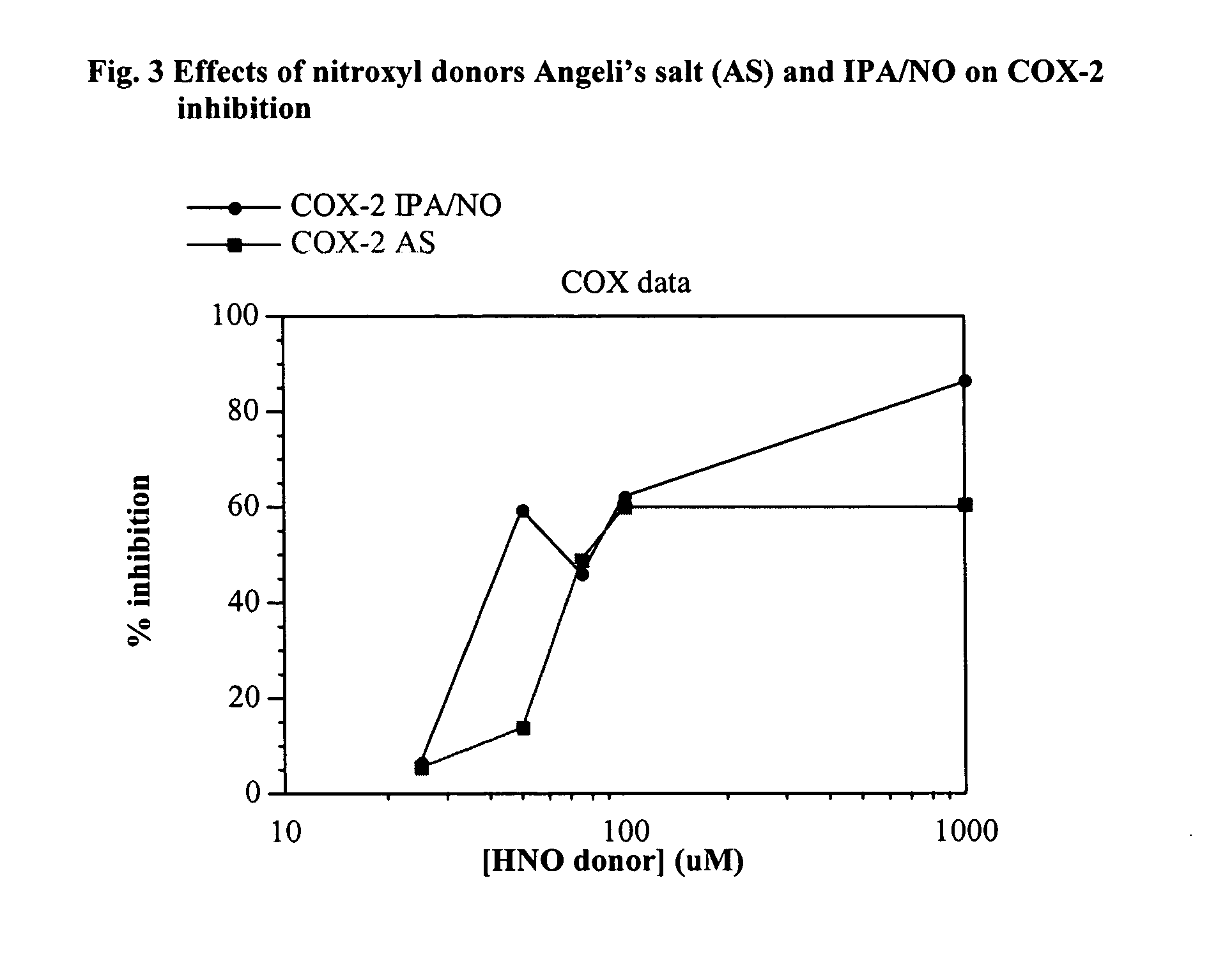Cyclooxygenase inhibition with nitroxyl
a technology of cyclooxygenase and nitroxyl, which is applied in the field of pharmaceutical compounds to inhibit cyclooxygenase2 activity, can solve the problems of inability to produce the prostaglandins necessary for “housecleaning", interfere with the normal production of prostaglandins, and inhibit cox-1 inhibition, etc., and achieve the effect of inhibiting cox-2 activity and inhibiting cox-2 activity
- Summary
- Abstract
- Description
- Claims
- Application Information
AI Technical Summary
Benefits of technology
Problems solved by technology
Method used
Image
Examples
example 1
This example demonstrates selective inhibition of COX-2 caused by the nitroxyl donor Angeli's salt.
Nitroxyl was investigated as an inhibitor of COX activity by measuring the inhibition of prostaglandin production when COX-1 and COX-2 systems were reacted with arachidonic acid either in the presence (inhibitor systems) or absence (control systems) of the nitroxyl donor Angeli's salt. The COX systems included 10 μL of either COX-1 or COX-2, 950 μL of an enzyme immunoassay (EIA) reaction buffer (0.1 M Tris-HCl at pH of about 8), 10 μL Heme, and either 20 μL of 10 mM NaOH for control systems or 20 μL solutions of Angeli's salt in 10 mM NaOH having concentrations of 0.001, 0.1, 1, 10, 50, 100, 500, and 1000 PM for inhibitor systems. Angeli's salt was maintained at a temperature of about 0° C. (kept on ice) until just prior to dilution in NaOH and use in testing COX inhibition. These systems were reacted with 10 μL of 10 mM arachidonic acid. After about 5 minutes the COX reactions were...
example 2
The same process for testing COX inhibition was used as above in Example 1. Table 2 contains the data showing the percentages of COX-1 and COX-2 inhibition resulting from adding Angeli's salt to COX-1 and COX-2 systems to investigate inhibition of the COX reaction.
TABLE 2Angeli's saltPercentage COX-1Percentage COX-2concentration μMInhibitionInhibition0.000000.00197.5n / a0.10024.798.91.057.5n / a10.0n / an / a50.016.4n / a100.045.798500.062.5105.71000.068.6106
Due to the sensitivity of the EIA kits used to determine COX inhibition the data for several concentrations were indeterminable. Further, at concentrations below about 50 μM this assay resulted in unreliable data. Thus, these data could not be used to reliably determine a COX-2 / COX-1 IC50 ratio. However, a reasonable estimate of the COX-2 IC50 is about 50 μM with a COX-1 IC50 of about 200-250 μM resulting in a COX-2 / COX-1 IC50 ratio of from about 0.25 to about 0.2. The performance of the assay kit in this example suggests that the da...
example 3
In this example the COX-2 inhibitory effect of the nitroxyl donor IPA / NO was compared to the inhibition by Angeli's salt. IPA / NO has a similar half-life to Angeli's salt so it is a good compound to use to compare to Angeli's salt. The same process for testing COX inhibition was used as above in Example 1, however, in this case nitroxyl donors and controls were used at concentrations of 25, 50, 75, 100, and 1000 μM and only COX-2 inhibition was determined.
Table 3 contains data showing the percentages of COX-2 inhibition resulting from adding either Angeli's salt or IPA / NO to COX systems to inhibit the COX reaction.
TABLE 3PercentageNitroxyl donorCOX-2 inhibitionconcentration μMAngeli's saltIPA / NO255.46.75013.759.57549.246.410059.962.2100060.486.8
As shown in FIG. 3, IPA / NO and Angeli's salt exhibited similar COX-2 inhibition at a concentration of about 25 μM. However, in the range from about 25 μM to about 50 μM IPA / NO inhibited COX-2 to a significantly greater degree than Angeli...
PUM
 Login to View More
Login to View More Abstract
Description
Claims
Application Information
 Login to View More
Login to View More - R&D
- Intellectual Property
- Life Sciences
- Materials
- Tech Scout
- Unparalleled Data Quality
- Higher Quality Content
- 60% Fewer Hallucinations
Browse by: Latest US Patents, China's latest patents, Technical Efficacy Thesaurus, Application Domain, Technology Topic, Popular Technical Reports.
© 2025 PatSnap. All rights reserved.Legal|Privacy policy|Modern Slavery Act Transparency Statement|Sitemap|About US| Contact US: help@patsnap.com



